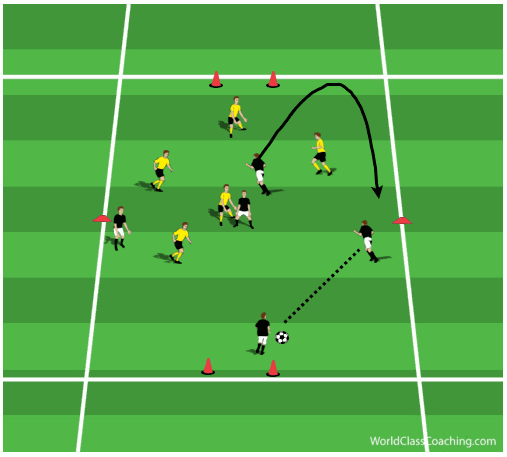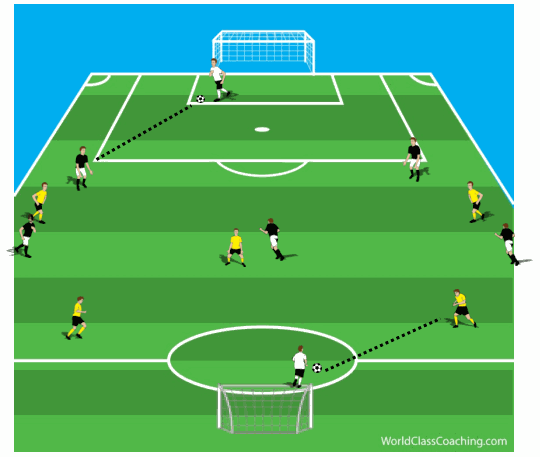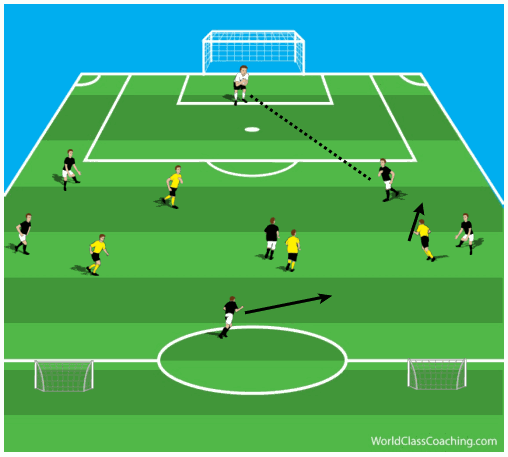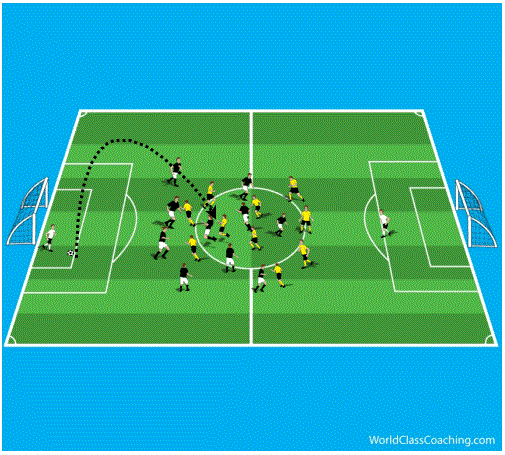By Eric Clermont -
Introduction: After many years of working with different coaches at the youth level at various levels of the game, (including Academy, club and even with school teams) it is still disappointing to me that when asked how they did on the weekend, most ‘youth educators’ will start by giving me the score or how they ‘battered’ the opposition. The game has and always will have a major emphasis on the result, but the problem intensifies when you see these coaches coach their team on the weekend., Defenders being demanded to ‘get it out’, long punts up field by goalkeepers who know no better and generally little care for the development of the players on show. The benefits of ‘building out the back’ and attempting to keep possession are far-reaching;
- Defenders and goalkeepers using technical skills to play out.
- Midfielders learning creative movement, ball reception, passing combinations and decision making.
- Full backs and wide midfielders learning how to overlap, beat players and attack in wide areas.
- Midfielders and forwards learning intelligent movement and combination play.
In my eyes, even though we’re in the age of possession in the footballing world, youth coaches need to put more demand on this aspect at a younger age and with this, the result must become secondary. The following give ideas on different ways to coach young players how to build out from the back.
Part 1: Small Sided Games
Organization: 25 x 40 field size.
Teams start in a 3 v 3 and then progress to a 5 v 5.
To begin, a good supply of soccer balls are set behind each mini goal. A player must restart possession from the goal and players get into shape (open), while the opposition team (in yellow) cannot pass halfway until after the first pass. This ensures success to start with for less advanced teams.
Progression
Play with no rules, but teams must continue to play a short pass from restarts.
Add two players per team and play in a 2-1-2 formation.
Coaching Points
- starting shape must be open and wide when possible
- Technical points- receive off the back foot and keep the ball on foot furthest away from defender
- Technique of short, sharp pass
Part 2: Shadow Play
Organization: 50 x 55 yard field. 10-14 players- 2 teams of 5-7 depending on level and ability (set up into a 1-4-2-1 formation) playing unopposed.
- Coach teaches three patterns of play from goalkeeper and then get team to practice;
- Short to centre backs and switch ball to opposite side centre back.
- Short to checking DM who turns to play full back or plays back to CB who then plays out.
- Goalkeeper plays long to full back, who combines to a checking DM, back to the opposite side centre back and then to the full back.
After patterns are practices, both teams play shadow play to 2 full size goals. Goalkeeper starts once team has starting shape (diagram), plays the ball forward to attempt to score at opposite end (every player must touch the ball). Goalkeeper can only restart once team back in starting shape. Aim is to attempt to move ball up the field quicker than other team. First team to score three wins.
Active Recovery- dynamic stretches.
Progression
Give players a condition that they must play a give and go in midfield before scoring.
Players must overlap for a full back to cross and finish.
Add a cone at halfway line and when all players have passed the halfway line, they must reload through the goalkeeper, get starting shape and play out again.
Number players 1-7 (depending on numbers playing) on each team and whichever number you call must defend against the other team to try and disrupt their possession.
Key Coaching Points
Key Tactical Principles of Attack-Width, depth, mobility, angle/distance of support, penetration, improvisation.
Technical points- weight and accuracy of pass, disguise in pass. Speed of play- half turn, attempt to play with minimal touches.
Part 3: Phase Play
Organization: 50 x 65 yard field. 7 v 4 (including GK) with 7 playing in a 1-4-2 formation and the 4 playing in 2-2 or 3-1 formation). Ball starts from goalkeeper. Team in black try to score through pug goals at half, team in yellow attempt to go to goal within five passes to score. Add more yellow players when necessary (if too easy for blue).
Progression
- Team in black must switch the point of attack before scoring
- Team must reload through goalkeeper once regaining possession (if they initially lose it)
- Extend the field by 20 yards in length. Add in an extra line per team, so black team plays in 1-4-2-3 formation and yellow play in a 2-3-1 formation
Coaching Points
- Verbal and non-verbal communication between players to keep ball.
- Use of goalkeeper in supporting role from behind.
- Transition from attack to defense and defense to attack.
- Decision of when to attempt to penetrate and when to ‘start again’.
Part 4- Full size field. 11 v 11
Black team play in 1-4-2-3-1 and yellow team play in 1-4-4-2. Full size field to 2 full size goals. 10 balls to ensure quick restarts and flow. If necessary, when yellow team win possession, they go to goal in five passes. May restart from blue goalkeeper when necessary (if topic not coming out). Recovery during coaching points and water breaks.
Progression
‘The Perfect Goal’- Must reload through the goalkeeper and score without the opposition touching the ball.
Extra Coaching Points
When to play forward and when to reload play through goalkeeper and restart play.
Goalkeeper must make the decision of when to play short and when to play long and attempt to win second ball.
By Eric Clermont - NSCAA Premier Diploma, USSF A License Candidate






